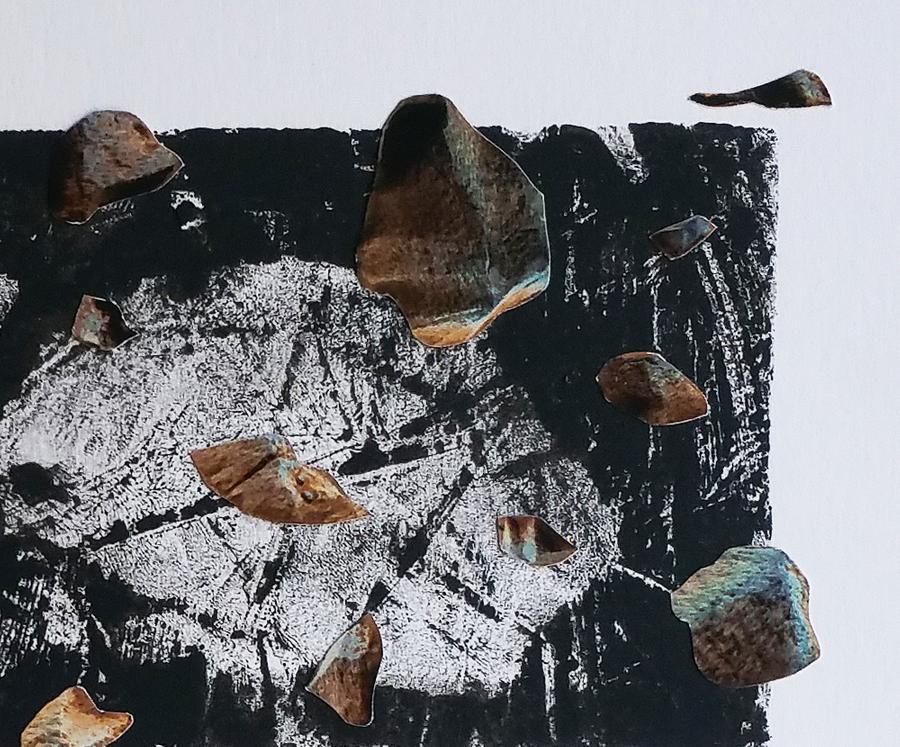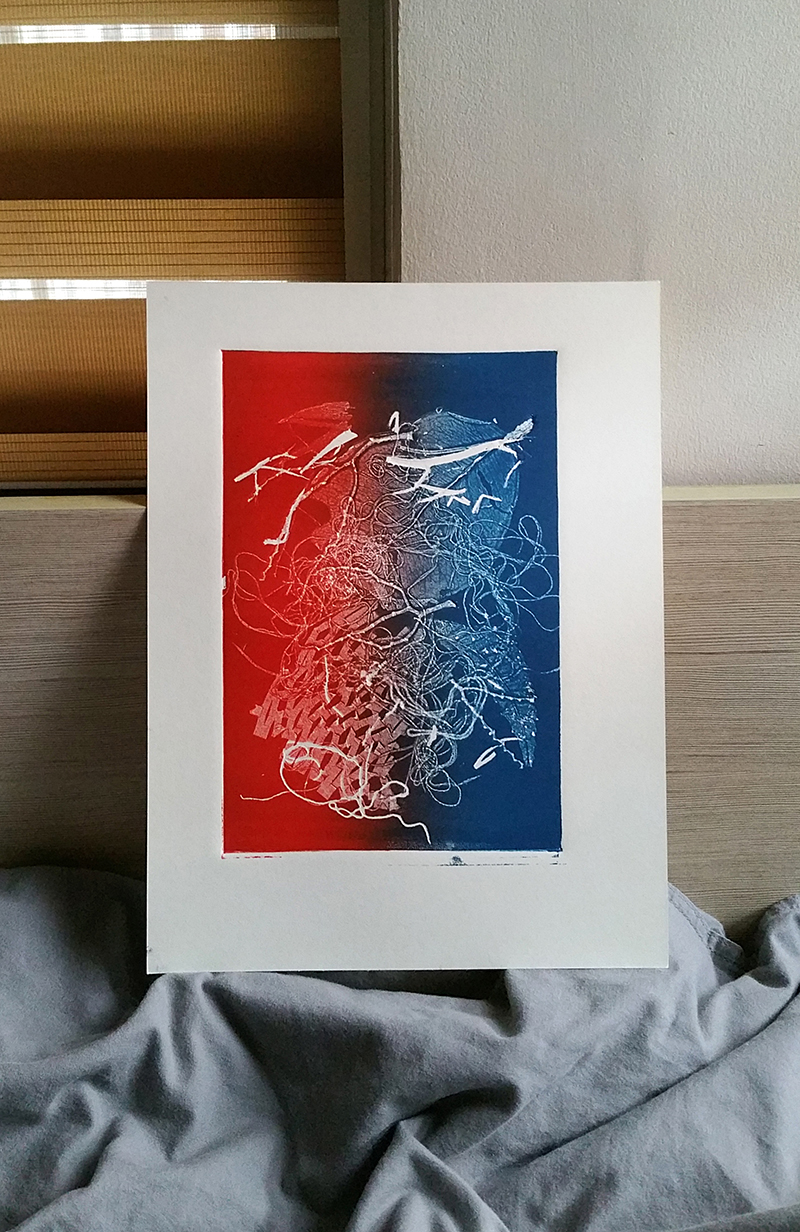


︎Cosmic Series (2023)
Type: Print
Media: Monotype, Collage
Edition: 1/1
Type: Print
Media: Monotype, Collage
Edition: 1/1
“Cosmic Heatwave”
“Cosmic Dust”
“Cosmic Rainfall”
Included in Art in the Park 2023 under the Manila Collage Collective.
“Cosmic Dust”
“Cosmic Rainfall”
Included in Art in the Park 2023 under the Manila Collage Collective.

︎Self-Dialogue (2022)
Type: Print
Media: Monotype, Collage
Edition: 1/1
Type: Print
Media: Monotype, Collage
Edition: 1/1
Included in Cartellino’s “Prints Made in May” event with the Limbag Kamay printmaking group. Sold to a collector in the United Kingdom.

︎Gills (2021)
Type: Print
Media: Monotype, Collage, Ink
Edition: 1/1
Type: Print
Media: Monotype, Collage, Ink
Edition: 1/1
Featured in Novice Magazine’s Cut and Paste Revolution special digital issue in 2021 alongside Fragments (2020)


︎Collide / Permafrost (2021)
Type: Print
Media: Monotype, Collage
Edition: 1/1
Type: Print
Media: Monotype, Collage
Edition: 1/1
Two prints made for Art in the Park 2021 and sold under Manila Collage Collective.



︎Fragments (2020)
Type: Print
Media: Monotype, Collage
Edition: 1/1
Type: Print
Media: Monotype, Collage
Edition: 1/1
Randomness is the lack of of pattern and predictability. While printmaking prescribes a specific order of steps to achieve a desired look, randomness is inherent in the artform where “happy mistakes” are welcome. No two prints are exactly the same. However, if randomness is uncertain yet unavoidable in printmaking, to what extent then can an artist control the final outcome of their work?
Fragments was created from everyday recycled materials, like plastic bags and old paper. Instead of using plexiglass as a matrix, a piece of plastic was used. The ability to manipulate the plastic sheet in various directions produced a unique and textured effect, playing on the unpredictability of printmaking itself.
Specific segments of an image were selected to be included in the final piece, cut and positioned in such a way to evoke the feeling of randomness, but the placements weren’t random at all. The final permutation of this piece of art wasn’t the only way it could’ve been made, but here it is.
In a way, isn’t life a series of random occurences put together in a seemingly non-random way? What are we but fragments of events that build up to a single identity?
Fragments was created from everyday recycled materials, like plastic bags and old paper. Instead of using plexiglass as a matrix, a piece of plastic was used. The ability to manipulate the plastic sheet in various directions produced a unique and textured effect, playing on the unpredictability of printmaking itself.
Specific segments of an image were selected to be included in the final piece, cut and positioned in such a way to evoke the feeling of randomness, but the placements weren’t random at all. The final permutation of this piece of art wasn’t the only way it could’ve been made, but here it is.
In a way, isn’t life a series of random occurences put together in a seemingly non-random way? What are we but fragments of events that build up to a single identity?



︎Found Objects Series A (2019)
Type: Print
Media: Monotype
Edition: 1/1
Type: Print
Media: Monotype
Edition: 1/1
Found Objects Series A is a series of monotype prints that explores the concept of ghost printing, wherein a single plate is run through the press multiple times, resulting in a fainter image each time. The elements were moved around before each run making for unique print editions. This series made use of objects found immediately within the vicinity of the studio such as leaves, twigs, and string, further driving home the spirit of unexpectedness that comes with ghost printing.
The experiments involved in making this series asks the question, can how much can art be truly random? Is art, in a truly random sense, still the creation of the artist? The prints can be taken as an example of how much (or little) an artist has over their medium when randomness is a major element of the creation process.
The experiments involved in making this series asks the question, can how much can art be truly random? Is art, in a truly random sense, still the creation of the artist? The prints can be taken as an example of how much (or little) an artist has over their medium when randomness is a major element of the creation process.